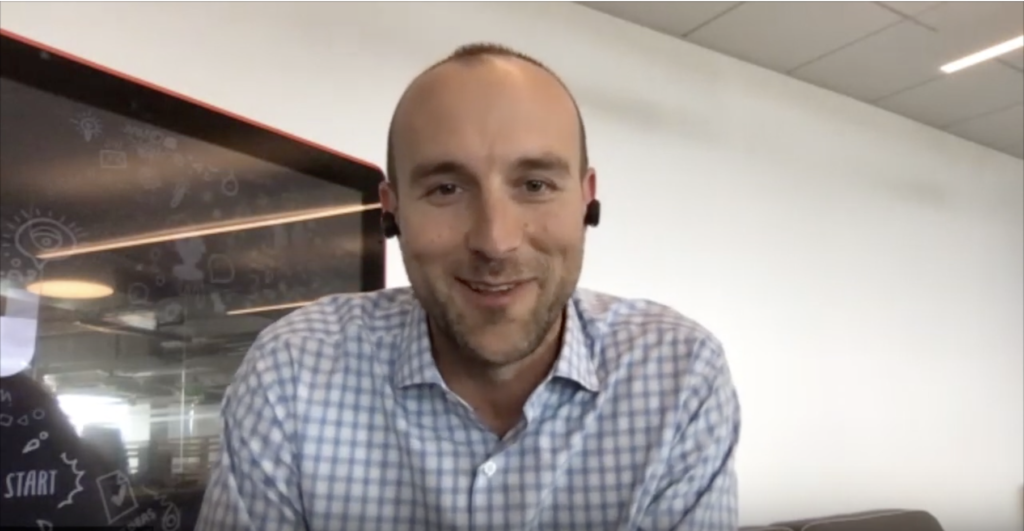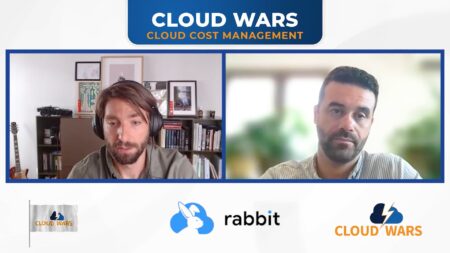As the enterprise cloud becomes not only completely mainstream but also the unquestioned foundation for digital innovation, we’re launching a series called the Cloud Wars Top 10 Executive Insights to explore the leading vendors’ strategies.
First up is Google Cloud, which is ranked at #7 on our Cloud Wars Top 10 list.
In a recent podcast episode kicking off this Executive Insights series, I spoke with Google Cloud’s Will Grannis. Will leads the Office of the CTO organization and is intensely focused on working with Google Cloud’s 100 largest customers.
Grannis, who before joining Google Cloud was a big-company CTO and also founded a startup that he later sold, touched on a range of issues including the rapid evolution in what customers want and expect from the cloud, Google Cloud’s unique capabilities in meeting those expectations, and this dynamic time of digital innovation and re-invention.
Here are some excerpts from my conversation with the highly perceptive and personable Grannis, who brings to his work not only a business pedigree but also a military background, a deep love of hockey, and a compelling commitment to customers.
And please check out the podcast video to hear Grannis tell these stories in his own intense way. (For the Executive Insights series across the Cloud Wars Top 10, we’ll be rolling out two episodes per week.)

Enabling “the aspirations of business creation.”
“Our whole mission is to create this technology bridge between the aspirations of business creation that these companies and partners have and the technology of Google.
It is very obvious to us that every large enterprise, every company that aspires to create value for their shareholders and for their customers and partners, they’re all pursuing what I would call a two-prong strategy. Strategy number one is cloud can offer efficiencies. It can offer the ability to invest in the future of those businesses. And second, it can enable those future businesses with sustainable business models that would not have been feasible before.”
How customer Iron Mountain exemplifies the dramatic and rapid shift from cloud as a driver of efficiency to the engine of digital transformation.
“A couple of examples pop to mind, like Iron Mountain, a really amazing company that has stored the archives of most of the companies in the world for many years. And now those companies are starting to unlock the power of those archives using data analytics, machine learning and cloud.
“Those examples are really a harbinger, I think, for this next wave of cloud. Which is, if you think back 10 years—I know it’s hard because we live in the month-by-month rapid product-velocity world—but if you think back about 10 years ago, a lot of the cloud discussion was around taking these storage and compute services that all companies were using and figuring out how to get them out of your capex and your area and put them in somebody else’s place. And now just 10 years later, we have entirely new business models, entirely new business lines being created through this convergence of these different cloud technologies and these platforms.”
Helping National Geographic and the New York Times harness “the power of cloud” to turn archives into digital-storytelling experiences and businesses.
“When I think about stories, I think about the New York Times and I think about National Geographic, both customers who have highlighted their work with Google Cloud. But what was most important to us is that this started from a kernel of an idea that they had about how to tell stories. They were kind of locked up in the old way of storing files or storing photos or storing this large archive. And Marcus East, for example, the CTO of National Geographic—someone I respect greatly—was at Next talking about being able to move their archive to Google Cloud. Not only did they take advantage of modern compute and storage and efficiencies and the infrastructure, but they also unlocked stories that had been kind of dormant for a long time.
If you’re a photographer, this is the story of your life, camera in hand, seeing the world through this lens and now everybody in the world gets access to what only was in the realm of a few photographers view-finder and then every once in a while the ones that made the print media, those were the ones highlighted. But imagine all the stories that are now being uncovered. That’s the power of cloud.”
“Creating outsized returns for businesses and breakthrough experiences for customers.”
“If you look at that, there’s four things that really outperform a lot of them are adaptive strategy teams, not in kind of shorter time cycles. And that’s the same across any industry. That decision, it was in the military quite a long time ago. One of the things we used to talk about was the OODA loop: observe, orient, decide and act. And when you can be inside that loop, amazing breakthroughs are possible. And we definitely see the same thing, not just in sports, but across every industry. When you can get inside that decision loop and when you can move faster than the pace of your peers.
“Because in business there is a little bit of a competitive aspect to it. But when you can move with that pace, you have the opportunity to create outsized returns for businesses and breakthrough experiences for customers.”
Google Cloud’s Anthos: putting the customer at the center of everything.
“So we just recently talked about Anthos at Next. Why would we do something like Anthos? Why would we try to orchestrate and manage and help customers, empower customers, to manage disparate cloud providers and infrastructure components and applications and services that are spanning people’s clouds other than our own potentially, right, including on-prem?
“Because that’s what customers need.”
Catch this entire interview with Google Cloud’s Will Grannis as part of our Cloud Wars Top 10 Executive Insights series.
Subscribe to the Cloud Wars Newsletter for in-depth analysis of the major cloud vendors from the perspective of business customers. It’s free, it’s exclusive, and it’s great!








